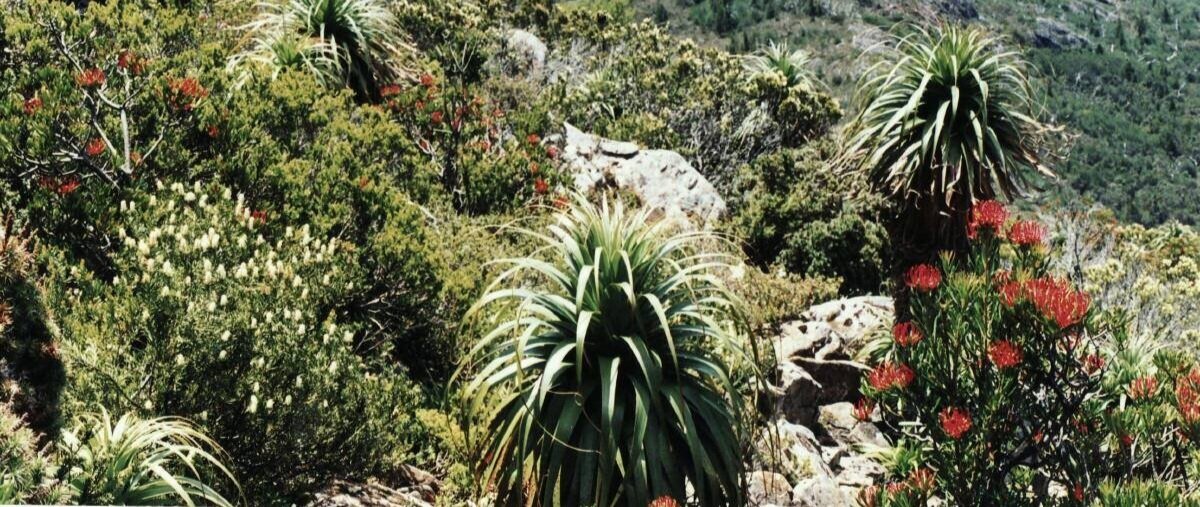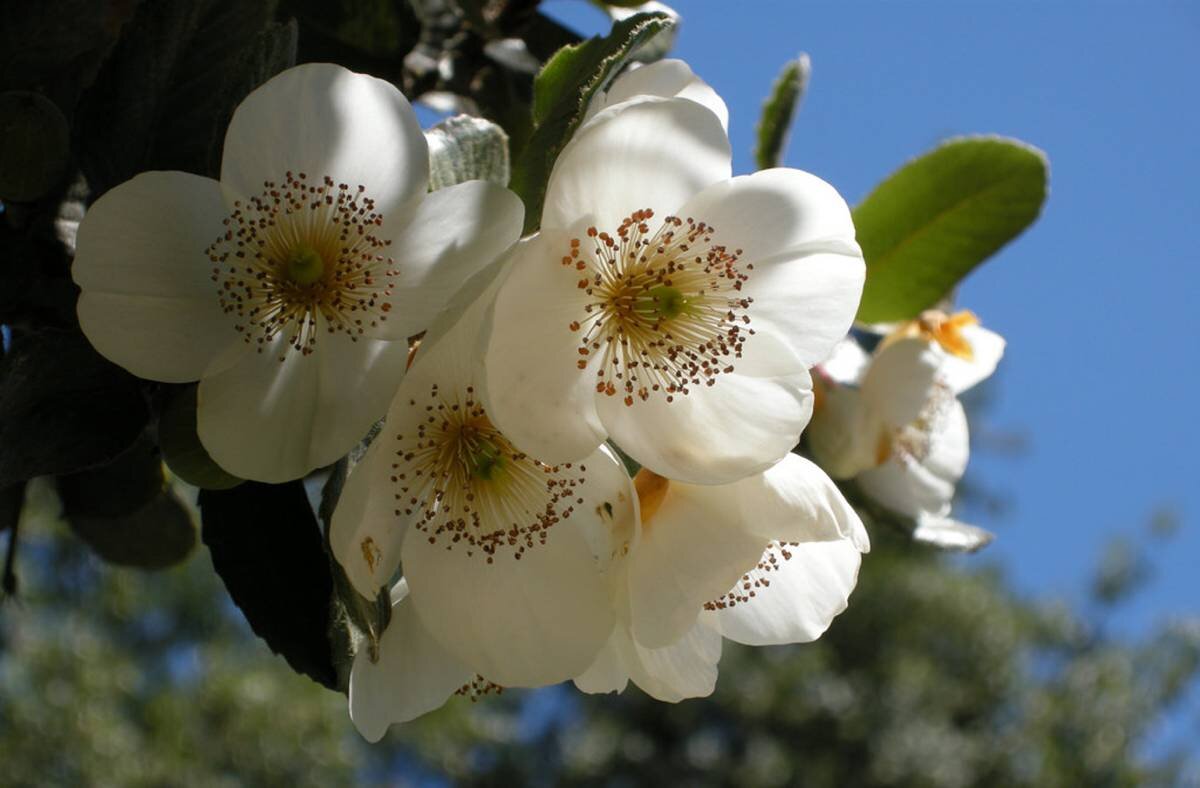
The Story of Gondwana
IN THE BEGINNING...about 5000 million years ago our solar system was born from a cloud of gas enriched with heavy elements, many of these being formed in the death throes of a previous huge star which had exploded.These heavy elements enabled our rocky planet Earth to condense...a living entity and still developing.
The geological history of earth is divided into the following periods identified by the particular sediments and fossils found in each period. The fossil record indicates that the first simple life arose some 3900 million years ago. Around 620 million years ago, multicellular life forms appeared and during the succeeding Cambrian period an event called the “Cambrian Explosion” occurred where numerous and more complex life forms occupied the entire planet. Today’s life forms have developed from these beginnings, albeit with many stops and starts along the way.
1 Dawn of Life
ARCHAEAN and PROTEROZOIC
3900-620 million years ago
2 The First Complex Life
THE EDIACARAN
620-542 million years ago
3 Life in the Sea.
THE CAMBRIAN:
542-495 million years ago
4 Rebirth & Replacement.
THE ORDOVICIAN:
495-435 million years ago
5 Landing of Plants.
THE SILURIAN:
435-395 million years ago
6 Age of Fishes.
THE DEVONIAN:
395-345 million years ago
7 Frigid Horizons.
THE CARBONIFEROUS:
345-280 million years ago
8 Glaciers and Ice.
THE PERMIAN:
280-230 million years ago
9 A Time of Change.
THE TRIASSIC:
230-195 million years ago
10 The Breakup Begins.
THE JURASSIC:
195-144 million years ago
11 The First Flowers.
THE CRETACEOUS:
144-65 million years ago
12 The Drifting Ark.
THE TERTIARY:
65-1.6 million years ago
The Foundation of Today’s Landscape THE QUATERNARY: 1.6 million years ago to the Present
During the Carboniferous, land masses on the planet had coalesced into the supercontinent known to us as Pangaea but towards the end of the Triassic it began to break up into two smaller land masses - Laurasia in the northern hemisphere and Gondwana in the south.
Gondwana included what is now Antarctica, South America, Africa, India, New Zealand, Madagascar and Australia. Over the millions of years, the climatic changes had enabled flora and fauna to develop and spread across the globe, which is why we find dinosaur bones in what are now frozen lands, coal and oil in the Antarctic - who could imagine this was once tropical?
In the late Jurassic Gondwana started to separate as plate tectonics and continental drift began to spin the land masses. Just think - what is now Hobart was once in the Northern hemisphere! The plants that were common to all Gondwana were now on their own and continued to evolve in their new homes. The most well-known examples are the Proteaceae - today’s Proteas from South Africa for instance, which are similar yet different from Australian Proteaceae, such as Waratahs, and will successfully grow here because the conditions are right.
Gondwana Flora Families
It was once thought that Australian flora developed alone but in fact it has only evolved in isolation for the past 40-50 million years after final separation from Antarctica. It appears there were a great many factors which shaped the present structure of Australia’s flora. During the inundation of the Cretaceous when a warm, moist climate prevailed, extensive subtropical rainforests of Nothofagus, Araucaria and Podocarpus developed over much of the land. During the Tertiary there was an explosive radiation among the flora and many new forms arose. One of the unique characters to develop at this time were eucalypts and acacias which seem to be an adaption to nutrient deficient soils. The next major event in the Tertiary history of Australia’s plants occurred about 15 million years ago when the Australian continental plate collided with the Sunda and Pacific regions facilitating an interchange between the comparatively rich floras of northern Australia and south-eastern Asia which explains the Indo-Malay element found in tropical rainforests of northern Australia.
Proteaceae
The Proteaceae are a family of flowering plants mainly found in the Southern Hemisphere in Australia and South Africa. The family has about 83 genera with nearly 1,700 species. Well known genera include Australia’s Banksia, Dryandra, Grevillea, Hakea and Macadamia, South African Protea and South American Embothrium. Lomatia is common to both Australia and South America.
Eucryphiaceae
The family Eucryphiaceae has been split off from a larger family, Cunoniaceae, and has one genus, Eucryphia with seven species, five of which are Australian and two are South American (Chile and Argentina). Tasmania has two species, Eucryphia lucida Leatherwood and Eucryphia milliganii.
Fagaceae
The Tasmanian Herbarium classifies the genus Nothofagus in the Fagaceae family and both Tasmanian species, Nothofagus cunninghamii and N. gunnii are classified accordingly. However, recently some botanists have reclassified all the world’s 43 Nothofagus species of Southern beeches into the family Nothofagaceae.
Myrtaceae
The family Myrtaceae are the largest of the Gondwana families with about 132 genera and nearly 6,000 species. Recent classification of the family recognises two subfamily, Psiloxyloideae with 2 tribes, Psiloxyleae and Herteropyxideae, and subfamily Myrtoideae with 15 tribes including Australia’s Melaleucaeae, Backhousieae, Tristanieae, Syzygieae, Eucalypteae, Leptospermeae and Chamelaucieae. South America has Myrteae and Metrosidereae.
Winteraceae
The Winteraceae family has over 60 species in five or more genera that grow mainly in the southern hemisphere from tropical to temperate climate regions. Australia has ten species in two genera, Bubbia, with two species from Queensland, and Tasmannia, with eight species, only one of which grows in Tasmania. Tasmannia lanceolata, Mountain pepper, grows from coast to subalpine areas in Tasmania and similar areas in Victoria and New South Wales, usually in wet sclerophyll habitats. It has become an important culinary species with its leaves and especially its fruit being used as a pepper substitute. Tasmannia lanceolata is notable for its glossy, dark green leaves on red stems and terminal clusters of yellow male and female flowers in spring to summer on separate plants. The berry fruit mature from green to red then black when ripe.
The most notable species in South America is Drimys winteri, Winter’s bark, which grows in the temperate rain forests of Chile and Argentina. Its fragrant, red bark is very attractive and has been used historically to prevent scurvy. It has jasmine-scented, creamy white clusters of flowers.
Other Winteraceae species are found in Malesia, Oceania, New Zealand and Madagascar. Pollen samples from the family, which is quite distinctive, has been found in fossils estimated to be 120 million years old. They also indicate that the family disappeared from Africa about 24 million years ago.
(References include Flora of Australia volume 2, Tasmania’s Natural Flora and Wikipedia)
A Gondwana Connection
Wollemi pine - Wollemia nobilis
In 1994 David Noble, an off-duty park ranger, abseiled into a shady, rugged gorge in an area now known as Wollemi National Park, 150 kilometres west of Sydney in the colder part of the Blue Mountains. Intrigued by a small copse of a curious tree he found there, with its peculiar bark resembling bubbling chocolate, and dark green, fern-like neeedles, which were quite different from the treetops of sassafras huddling beneath it, he brought back a specimen branch.
Excited researchers have found that it's a relic from the Age of the Dinosaurs. Notwithstanding numerous challenges - the many changes in climate since the Cretaceous some 90 million years ago; the devastating extinction of species about 65 million years ago (including the Dinosaurs), the rise and fall of great civilisations, and the arrival of Europeans in Australia who made heavy inroads and changes to the countryside, and even the frequent but destructive bush fires in that area, this tree is one of nature's true survivors.
Thought to be a separate branch of the Araucarian family of conifers, which have been around for about 215 million years, and were once dominant in the northern hemisphere forests before becoming casualties of the demise of much Cretaceous flora; the family was then only found in the southern hemisphere, consisting of the Hoop, Bunya and Norfolk Island pines. The Wollemi pine appeared to become extinct many millions of years ago with only a few pollen particles found in two-million year old Bass Strait sediments during oil exploration..
But all is not yet lost. After being hailed as the botanic find of the 20th Century and given the name Wollemia nobilis (Wollemi Pine), it was decided to gather the wild seeds and propagate new trees in a commercial plantation in Queensland which were then auctioned to raise much needed funds for further research.
Young trees were placed in botanic gardens and in certain National Parks in Australia to see how they could cope with various conditions. Many more have now been produced for sale to the general public; thus making it more commonplace and greatly increasing its chances of a continued future. Tasmania was once part of the great Gondwana continent (see Timeline) and even today has other plant species which are relics of that long ago era. Now it has a new "old" friend - one with great prehistoric mystique but hopefully a long life in a very different era.
Ancient Flora
Quoting from Mary White’s The Greening of Gondwana1, ‘The Age of Conifers and Cycads’
“The Jurassic Period was uniformly warm to hot and wet worldwide, and there was a luxuriant cosmopolitan flora of Conifers, Cycads, Ferns, Seed-ferns, Ginkgos, and herbaceous Lycopods and Horsetails. The flora, which continues into the Early Cretaceous, is the last to be composed of plants from ancient groups only. After the Jurassic, the changeover to modern-aspect flora commenced.”
Athrotaxis cupressoides and A. selaginoides of the Cupressaceae or Cypress family, are endemic to Tasmania, and belong to the readily identifiable group of plants known as the conifers,2 and are related to the ancient Jurassic Period conifers. Fossils of these ancient conifers have identical leaf structures and very similar fruit forms.
Fern fossils are very common for the Jurassic Period, Cyathea australis and C. cunninghamii are Tasmanian species of this very ancient fern family.
Fern fossils similar to the Dicksonia antarctica fiddlehead have been found, similarly fern fossil cross sections like the Dicksonia antarctica trunk cross section have been also found.
The Cycad fossil image has leaf form similar to the leaf forms of the Zamia palm photo. Cycad fruit fossils have also been found, similar in form to that of the Zamia palm.
The term Seed-ferns (Pteridospermatophyta) refers to several distinct groups of extinct seed plants, the Spermatophytes. Pteridosperms declined during the Mesozoic Era and mostly disappeared by the end of the Cretaceous, though some pteridosperm-like plants seem to have survived into Eocene times in Tasmania. Rhacopteris were a genus of Seed-fern fossils, from the Late Carboniferous period, which have been found in New South Wales.
Ginkgo biloba, according to Wikipedia, the free encyclopaedia, is the only living species in the division Ginkgophyta, family Ginkgoaceae, the few others that may have existed, now being extinct. It is found in fossils dating back 270million years and is native to China. It has been widely cultivated since early in human history, especially in Japan and Korea, and has various uses in traditional medicine and as a food source. Reference can be found to Ginkgo fossils in the northern supercontinent, Laurasia, which had been joined to Gondwana in the larger supercontinent of Pangaea. Cycads are said to be the closest living relatives to Ginkgos.
Club moss fossils specimens similar in foliage to that shown in the Lycopodium fastigiatum picture have been found and dated to the Jurassic Period.
Horsetails are rushlike plants with only one surviving genus, Equisetum, and are not found in Australia, so are not covered in this page. They are a class in the plant division, Pteridophyta which includes the ferns.
1. The Greening of Gondwana, 3rd Edition, 1998, Mary E. White, Kangaroo Press and imprint of Simon and Schuster, p157.
2. Tasmania’s Natural Flora, 3rd Edition 2021, Christine Howells, Editor, Australian Plants Society Tasmania Inc., Hobart Group, p6.
3. Quoted from the Wikipedia internet page on Seed fern, https://simple.wikipedia.org/wiki/Seed_fern
4. Information from the Wikipedia internet page on Equisetum, https://en.wikipedia.org/wiki/Equisetum.







